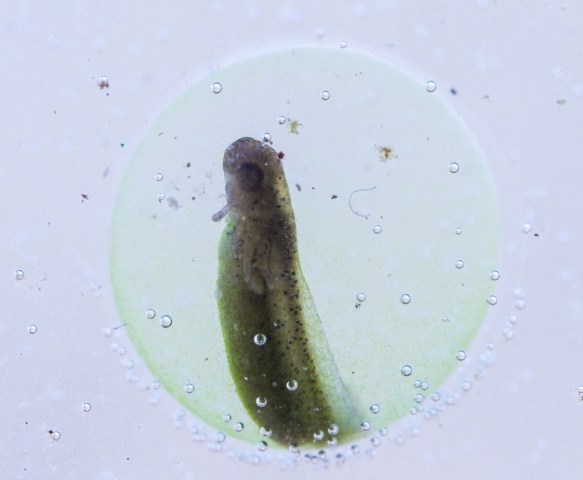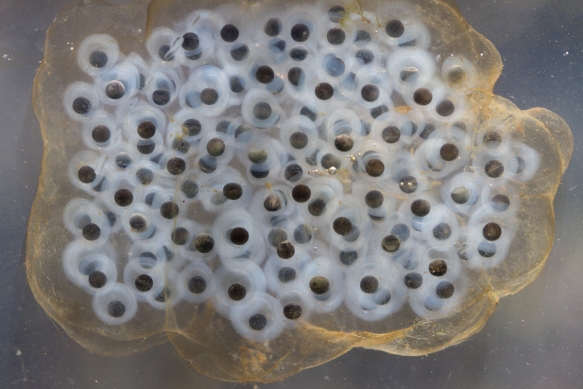I shared an early sign of spring about a month ago when I posted some images of Spotted Salamander spermatophores (Salamander Candy) in a woodland pool near my home. Last week I checked out that pool, and a few others, looking for the next step in the recipe for creating a full-baked Spotted Salamander – the egg masses.
These jelly-like blobs usually contain 50 to 200+ individual eggs. When first deposited, they are about the size of a golf ball. Over the next few days, the gelatinous mass absorbs water and grows much larger, often almost attaining the size of a somewhat elongate softball.
Most of the egg masses I saw in the shady woodland pool were still in the “nub” stage – the developing embryos are not yet recognizable as salamander larvae.
The amount of detail you see depends greatly on the light used to illuminate the egg mass. It will probably take another week or two of warm weather before these hatch.
That same day, I traveled to an open roadside site near Jordan Lake where I found salamander eggs in the past during my amphibian workshops for the museum. The site has been altered since I last visited and is smaller now due to some bulldozing nearby.
To my delight, there are still salamanders hanging on at this site.
These are much further along in their development. They may have been deposited at an earlier date than those from the other location, but since this site receives full sun most of the day, these eggs probably develop faster than those from the shady woodland pool.
Again, the angle and type of lighting gives a much different look to the art of the egg mass.
Here are a few close ups of the developing larvae…

You can see a larval form now including the “balancer” under the chin – one of two fleshy appendages the larva has for a few days after hatching that help it maintain position in the water column
The last stage before hatching. Note the two layers to the egg (all of which is also embedded in a gelatinous matrix with the other eggs). You can also see the symbiotic green algae in the egg layer.
The gelatinous matrix begins to deteriorate right before the larvae start hatching so you get these individual, greenish salamander globes in the water. I think this may be my favorite part of the recipe.










Wow amazing!!
Salamander blog was so wonderful!!!!
Thanks, Melissa.
Pingback: New Beginnings | Roads End Naturalist
We found salamander eggs in a vernal pond. We brought them home. Should we change the water everyday? Should we feed them if so what to feed them? How do we take care of them?